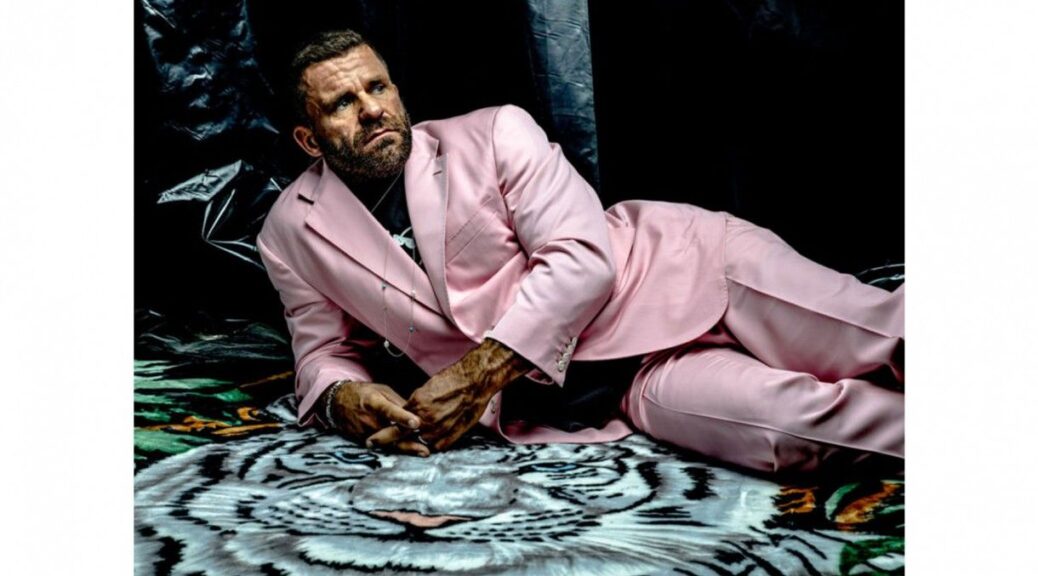BJARNE MELGAARD, born on this date is a Norwegian artist based in New York City. He has been described as “one of Norway’s most important artists” and, following the 2014 publicity about his sculpture Chair, “the most famous Norwegian artist since Edvard Munch.”
Born in Sydney, Australia to Norwegian parents, Melgaard was raised in Oslo, Norway. In 2009, he moved permanently to New York. Melgaard studied at the Norwegian National Academy of Fine Arts, Rijksakademie in Amsterdam from 1991 to 1992 and at the Jan van Eyck Academie in Maastricht from 1992 to 1993.
Early in his career Melgaard created controversial installations referencing subversive subcultures such as S&M and heavy metal music. Currently, his practice consists of an emphasis on expressionistic paintings and drawings, often containing text.
His first show in New York was in 2000, where he exhibited sculptures of apes engaged in sex acts. In January 2014, Melgaard’s artwork Chair caused controversy. Chair is a sculpture of a bound black woman on her back with a seat cushion on her thighs, and is a reinterpretation of a similar piece by British pop artist Allen Jones. The controversy began when Russian art socialite Dasha Zhukova was photographed sitting on the cushion for a fashion website, resulting in online accusations of racism under the Twitter hashtag #racistchair. Guardian critic Jonathan Jones suggested that this controversy was a misunderstanding of Melgaard’s intentions, and Zhukova said that the photograph of her was “out of context”; the artwork intended to be a “commentary on gender and racial politics”. Melgaard himself released a statement responding to the controversy that was labelled by some writers as “bizarre”.
Melgaard has collaborated with Norwegian artist Sverre Koren Bjertnaes in several exhibitions. The two alternate to work on the same canvas, giving them an expression neither of the artists would achieve alone
For some time in the 2010s, Melgaard was a contemporary art star. His auction market peaked in 2013, when an installation called “Kill Me Before I Do It Myself” sold for about $471,000, according to an Artnet database. The artist complemented his six-figure sales with controversy and clout.
“He was a chaos machine,” said the owner of the Ramiken Crucible gallery, whose 2012 Melgaard show featured two tiger cubs shredding clothes from the fashion brand Supreme. The cage housing the tigers was not fixed into the floor and would rattle as the animals circled.
A year later, in 2013, the dealer Gavin Brown exhibited Melgaard’s large sculpture of the Pink Panther smoking crystal meth alongside an assemblage of pornographic images, psychedelic patterns and expressionistic paintings. The show earned roundabout praise in The Times from the critic Ken Johnson, who wrote: “Bjarne Melgaard is a projectile vomiter, and like Linda Blair in ‘The Exorcist,’ he seems possessed by a demonic force.”
Melgaard said he enjoyed pushing boundaries, sometimes to his own detriment. “I have been canceled a hundred times,” he said. “I was a functional drug addict.” Several of his works have included hypersexualized images of Black people, including a chair whose main structure is a scantily clad Black female mannequin on her back.
